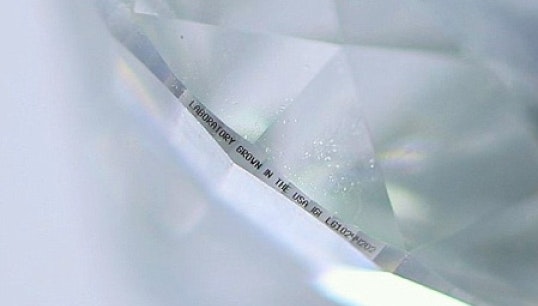
THE DIFFERENCE BETWEEN LAB-GROWN & NATURAL DIAMONDS
WHAT ARE LAB-GROWN DIAMONDS?
Lab-grown diamonds are diamonds that are grown in laboratory conditions that utilise controlled advanced processes. Lab-grown diamonds possess the same chemical and gemological properties as natural diamonds as they’re made from the same material.
NATURAL DIAMONDS VS. LAB-GROWN
The primary and only difference between natural diamonds and lab-grown diamonds is the source. Natural diamonds are mined and formed under the earth’s crust over billions of years, whereas lab-grown diamonds are manufactured in a controlled lab environment.
Lab-grown diamonds can take only a few weeks to form, whereas natural diamonds can take centuries to form. There are no differences in the physical and chemical composition of natural diamonds and lab-grown diamonds.
HOW ARE LAB-GROWN DIAMONDS MADE?
Lab-grown diamonds are made using two processes:
High Pressure-High Temperature (HPHT) process
This process utilises a high pressure/high-temperature environment to grow the diamonds. Three primary methods are used including the belt press, cubic press, and split-sphere (BARS) press.
Chemical Vapor Deposition
(CVD) The CVD process grows diamonds in a chamber filled with carbon-rich gases.

WHY CHOOSE A LAB-GROWN DIAMOND?
Ethically manufactured
The mining of natural diamonds require intense labour, and can profoundly impact the surrounding communities around the mining areas. Lab-grown diamonds are more ethical as they don’t require mining nor labour for sourcing.
Affordable
Lab-grown diamonds cost approximately 40% less than natural diamonds.
Value
The value of lab-grown diamonds has a heightened probability of decreasing. As they are human-made, the production of lab-grown diamonds has become less expensive and has economically improved. These improvements in the process create an opportunity for a high level of production of lab-grown diamonds, and if the lab-grown diamond market is flooded with inventory, the value decreases.
More affordable options available for coloured diamonds
Coloured diamonds are naturally rare, and due to this, the cost of a natural coloured diamond can be high. The colours of lab-grown diamonds can be manipulated to a specific colour which is more affordable than natural coloured diamonds.
Less environmental impact and carbon footprint
The mining of natural diamonds uses an enormous amount of fossil fuels, whereas lab-grown diamonds do not as they’re not acquired by mining. Lab-grown diamonds also use renewable energy during the production process.
Quality and purity improvement
Advanced technology and controlled processes of growing lab-grown diamonds allow more precision in producing high quality and purer diamonds.
HOW TO IDENTIFY SYNTHETIC DIAMONDS
Although synthetic diamonds have the same crystal structure and chemical composition as the natural ones, the diamond growing process leaves unique features in the finished products. These features help to tell synthetic diamonds apart from natural ones and even allow to identify which method has been used to grow the diamond.
RESPONSIBLE DISCLOSURE
The biggest concern about synthetic diamonds is the non-disclosure of their origin and wholesalers or jewellers representing them as natural ones. Majority of synthetic diamonds are responsibly disclosed to be lab-created. There are many different industry terms such as synthetic, human-made, cultured or created diamonds and they all mean the same thing – either way, the diamond is not natural.
The majority of synthetic diamond manufacturers are reputable organisations that are transparent about their products. Some companies even laser inscribe their diamonds’ girdles to mark them as lab-grown. Moreover, lab-grown diamond creators never miss the moment to highlight the ethical source of their product.

INCLUSIONS
HPHT synthetic diamonds can often contain metal inclusions such as nickel, cobalt and iron because these metals are used during the growth process, and sometimes form part of the rough diamond crystal.
CVD diamond never contains metal inclusions, but they often come with graphite or other mineral inclusions that are a result of their growth process.
FAQ
A differentiation between natural and lab-grown diamonds cannot be made.
Lab-grown diamonds are not simulants.
Lab-grown diamonds are real diamonds. They possess the same chemical and physical properties as natural diamonds
CONSULT WITH AN ADC ONLINE DIAMOND SPECIALIST
Need help selecting your diamond? Our trained diamond experts will tell you everything you need to know about each diamond you are considering. They can assist you in making the right selection from the comfort of your home.


